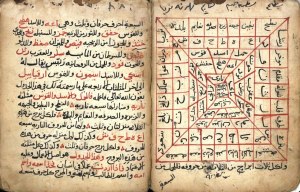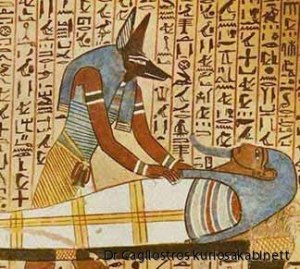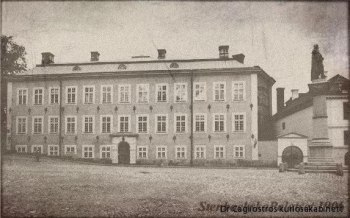An occult conspiracy in 17th century Sweden
Child's first name: Sophia Albertina
Child's surname: Westerström
Admission Date: 7th March 1795
Release Date: 20th June 1795
Remarks on release: Retrieved by the worried mother in fear of the dog-Turk.
The Stockholm General Orphanage records of 1795
In the spring of 1754 the streets of Stockholm are filled with bizarre rumours about the Swedish Freemason Lodge of St. Jean auxiliaries’ involvement in several unexplained disappearances. It is also whispered about the Swedish Freemasons´ secret dealings with a mysterious oriental cult and a terrifying man-eating monster. The dreaded Dog-Turk allegedly is a fearsome creature with a human body and the head of a dog. This horrifying monster is rumoured to reside somewhere in the Near East. The stories of the Dog-Turk and the Freemasons are quickly connected with surprisingly persistent rumors that King Charles XIIs’ debt to Turkey is to be paid in human flesh
.
Were these stories simply the result of xenophobia and Sweden’s, at the time, very complicated relationship with Turkey? Or was there another, even darker truth behind these disturbing rumours?
 Charles XII injured in his foot at the battle of Poltava. Painting by Gustav Cederström
Charles XII injured in his foot at the battle of Poltava. Painting by Gustav Cederström
After his defeat at the Battle of Poltava in 1709, The Swedish King Charles XII managed to escape with a just a few hundred Swedes and a large number of Cossacks. The King led the remainder of his troops to the Ottoman Empire, where they stayed for almost four years. In February 1713 the Turks, due to their complicated relationship with King Charles XIIs’ enemies, tried to persuade the king to leave by force of arms. But the King´s war funds were dry, and for their return trip to Sweden Charles XII was forced to borrow a considerable sum of money. According to historians, the money was borrowed from the Grand Visor Ali Pasha and some Europeans in Constantinople, but from the Swedish camp in Bender, Maj. Gen. Anders Lagerkrona writes in a letter to his sister:
The visor lets us know that he is unwilling to bestow the King the necessary funds for the trip, but that damned Sparre has nocturnal negotiations with the dogs. Dogs, I say, for nothing else can they be called. No beautiful Christian virtues are known to them. It is whispered that they worship a demon with the animal's head, but further details will I spare you dearest sister.
 Pages from Ahmad al-Bunis forbidden picatrix Shams al-Ma'arif al-Kubra
Pages from Ahmad al-Bunis forbidden picatrix Shams al-Ma'arif al-Kubra
At the time of King Charles XII stay in Bender, the mystical Sufi Order of Mukashafa is striving to survive in northern Persia. The order has been declared blasphemous and banned by several Persian kings, and has finally been forced to take refuge in secluded areas south of the Caspian Sea. The Order of Mukashafa had its roots in the Ismalitic assassin movement, but they also claims to be heirs to the mystical traditions of Ahmad al-Buni. Their banishment was earned from their disturbing and devoted exploration of the forbidden knowledge of ancient Egyptian and Babylonian magicians. Their strange rituals were dedicated to forgotten spirits, for whom Islam has no name.
 Anubis
Anubis
The Order of Mukashafa was known as eminent astrologers but also for their profound knowledge of the dark necromancy of old Egypt. Their enemies accused them of worshiping the Egyptian God Anubis. Many people also claimed that the Order was able to resurrect the dead and use them as servants and assassins.
Was it of these Sufi mystics, the Dogs, that Maj. Gen Lagerkrona was referring to in his letter? We can not know for sure, but we know that representatives of the king's creditors were travelling with the King to Sweden, in order to ensure that the debt was paid. The negotiations with the Arabs were managed by Count Eric Sparre of Sundby.
In 1716 the Jesuit priest Martin Gottseer writes in a letter to Michelangelo Tamburini about Arab mystics secretly visiting the Royal Palace in Stockholm. Gottseer is deeply concerned about their influence over the court and King Charles the XII.
Almost immediately after the king's return to Sweden, the rumours about the mysterious disappearances are starting to spread. It is said that the King must pay his debt to Turkey with the flesh from orphans, captured at night in the streets Stockholm. The meat is allegedly salted and shipped in barrels via Malta to an unknown port in the Middle East.
But that the Swedish royal family would pay a debt with human flesh, does however seem incredible. And that the debt was so great that it had to be paid even many years after King's death seems even more unlikely.
So what was it that the mysterious Sufis had to offer, that made Charles XII want to pay such a horrible price?
 Count Eric Sparre. Painting by Nicolas de Largilliere.
Count Eric Sparre. Painting by Nicolas de Largilliere.
It was said about Charles XII that he was "hard against shots", that bullets could not harm him. It was rumoured that the King was protected by a higher spirit, whom had made him immortal.
On his deathbed in Stockholm 1726, Count Eric Sparre of Sundby summons a priest to confess his sins. Many years later the priest Nicolaus Lagerlund, records his life story, in which we find Count Sparres´ horrible confession.
Count Sparre tells how he, in 1715, was called home to
Sweden from Paris to take over negotiations with Persian diplomats that was initiated in Bender a few years earlier by his brother, General Axel Sparre. The negotiations concerned payment to oriental magicians for preforming several gruesome rituals that was to make the Swedish king Karl XII immortal. The payment was to be annual deliverances of human flesh in certain amounts. Sparre called himself The advocatus of Lucifer and was deeply repentant. He also revealed to Lagerlund that the annual shipments of meat still were sent to the East, but that the matter now was handled by Count Sparre's son, the young Axel Wrede-Sparre. Count Sparre feared that his son now had entered into an agreement of his own with the Oriental demons as a mean to attain forbidden knowledge.
In Lagerlund´s account of Count Sparre's story he comments that, despite many new disturbing elements, the story is simply another variation on an already well-known myth. Many stories of Charles XII invulnerability have been circulating for some time. It is rumoured that he had eaten a wolf´s heart in a ceremony with Sami shamans, and that he possessed a magic shirt that bullets could not penetrate.
But in November 1718 Charles XII finally falls for bullet when he is shot with a button stolen from his own uniform. It is a widespread belief in Scandinavia that people protected by magic only can be killed or injured by something that have been stolen from them, e.g. a button. If the stolen button actually was made into a magical weapon capable of breaking the powerful Egyptian spell we can´t possibly know. However, we can be certain that the King's murderer believed in the stories of Charles XII invulnerability, and thus killed the king in the only way he thought possible.
It would seem likely that the death of the king would end the stories about missing children and the dreaded Dog-Turk, but strangely enough the rumours only escalate. If Count Sparre's last confession to the priest Nicholas Lagerlund was not only a dying man's feverish delirium, we have reason to suspect that Swedish noblemen attempted to attain dark oriental secrets, even after the death of king Charles XII.
 The Stenbocks Palace on Riddarholmen in Stockholm, where The Masonic Lodge of Count Wrede-Sparre had its meetings between 1735 and 1752.
The Stenbocks Palace on Riddarholmen in Stockholm, where The Masonic Lodge of Count Wrede-Sparre had its meetings between 1735 and 1752.
In 1735, Count Sparre's son, Axel Wrede-Sparre founded the first Swedish Masonic lodge. In 1752 most of the members of his original lodge transferred to the newly founded masonic lodge of St. Jean Auxiliaire. Only two years later the St. Jean Auxiliaire lodge founded the first Freemason Orphanage in Stockholm. This is when the rumours of the Freemasons´ association with the Dog-Turk and their trade with human flesh really accelerates, and does not fade until the early 1800s when the Swedish Freemasons dissolve St. Jean Auxiliaire lodge. The Freemasons Orphanage is still in use until 1945 when it is bought by the Stockholm city council.
If the stories we are describing here are connected, and if there is the slightest element of truth behind all the strange rumours, there is good reason for us to return to our story to explore the effects that this well-hidden occult conspiracy may have had. And maybe still has ...
O. Hejll, Curator Dr Cagliostro’s Cabinet of Curiosities. Secret location, 2011



